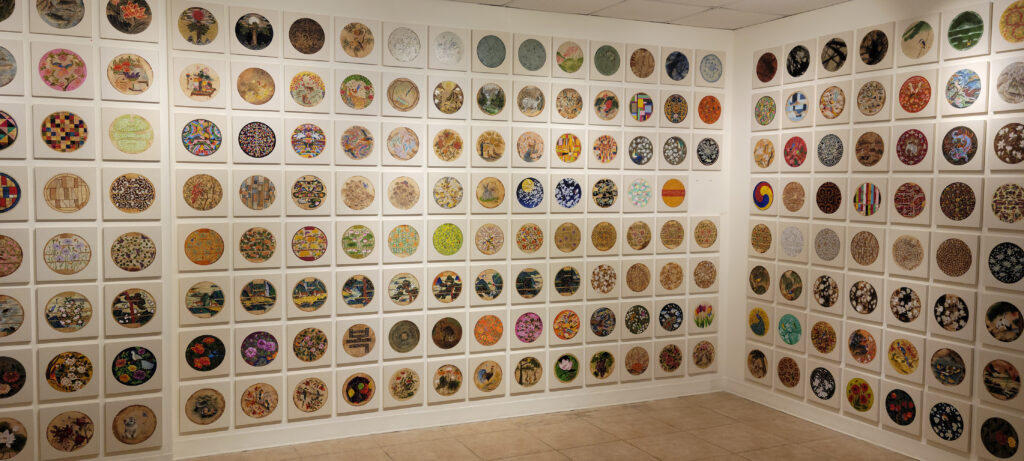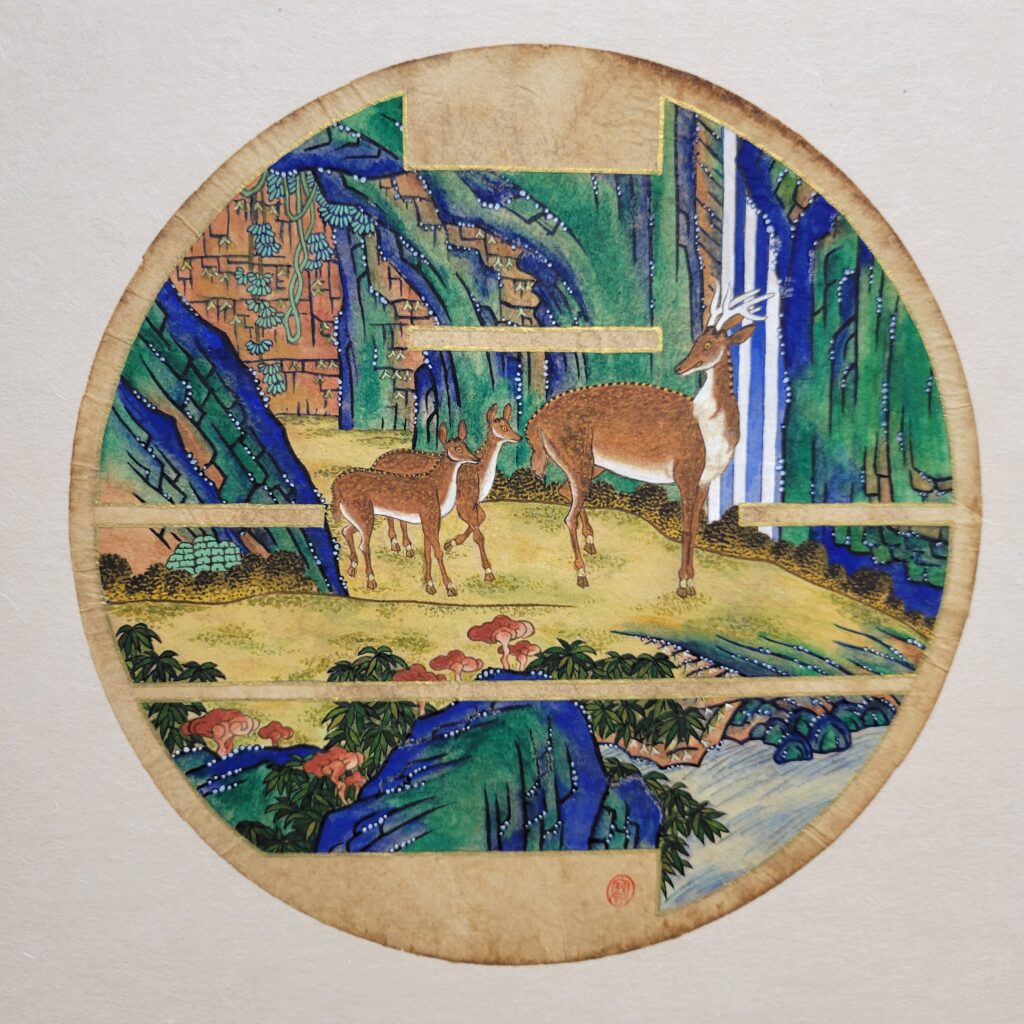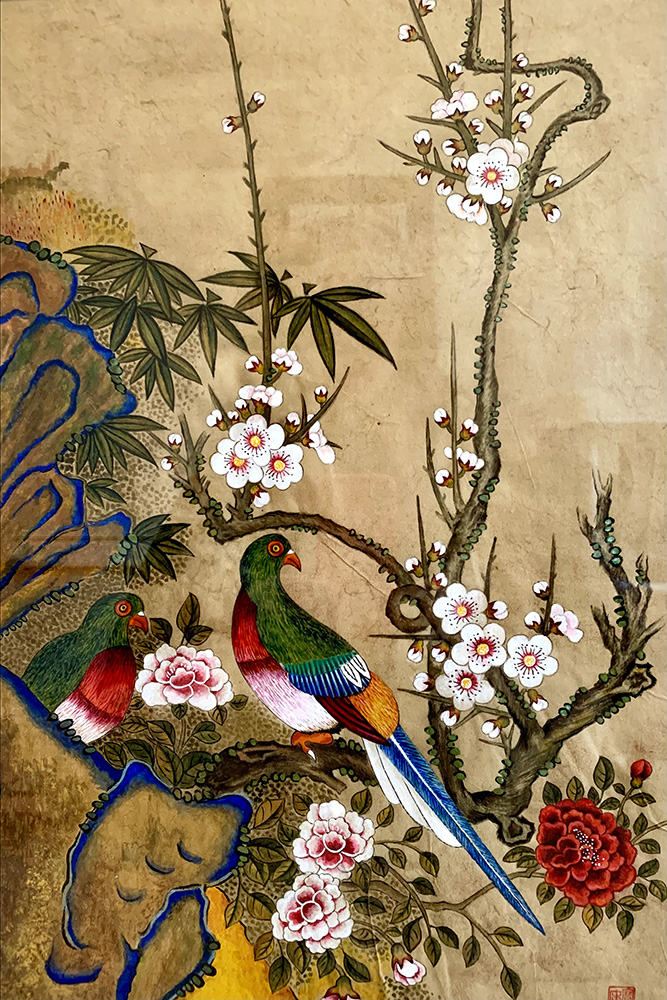by Thalia Vrachopoulos Ph.d
This month’s exhibition at Paris Koh Fine Arts gallery in Fort Lee, N.J., entitled Reminiscence features the traditional or Minhwa paintings of Bokyung Woo. The artist who earned both her BFA and MS from Pratt Institute in Brooklyn, expertly continues the Korean tradition of Minhwa painting demonstrating that the Daoist principles of respecting the way of nature is still relevant.

The Minhwa (Korean Folk Painting) category includes bird and flower painting, associated with the literati class of scholars, who began working in this style during the Tang and proliferated during the Sung period in China. The style was subsequently adopted by Joseon Dynasty (1392-1910) painters in Korea who first used it on decorative screens painted in meticulous detail. Minhwa themes range from so-called flower and bird painting, organic or marine life and up to everyday scenes of that era executed in a colorful, decorative manner usually on handmade or Hanji paper. Minhwa paintings can also have apotropaic value because they are believed to have protective powers and usually depict mythic symbols, or legends with symbolic meaning. So that, when viewing the tondos forming a fantastic installation across three gallery walls from top to bottom, one is astounded by the richness and variety of their content. The powerful curatorial voice of Suechung Koh is felt when facing these three walls of tondo within square Korean traditional paintings. In these installation works Woo uses the full panoply of Korean symbolism and pattern to convey her birth country’s traditions but also the qualities alluding to its roots; nobility, modesty, integrity.

Woo’s Bok, 2021-2024 (10×10” Asian Watercolor and mixed media on coffee filter, on Hanji covered wood panel) incorporates hidden lettering for the word Bok that means “good luck.” The artist uses the blue-green technique that also appears in the historic 19th Century decorative screen from the Joseon Dynasty entitled The Sun, Moon and Five Peaks. In China where it originated, this method is called Shan shui, and was developed and formulated by the Chinese artist Li Sixun in the Tang Dynasty and used later in Korea. It involves the use of brightly colored mineral pigments sometimes incorporating gold outline, associated with alchemical processes as an elixir of immortality. Woo’s Bok Series depicts 3 deer in a paradisical setting standing next to a pristine reflective pool of water, against a backdrop of waterfalls. Woo may have associated the alchemical properties of the blue-green method with the loss of her son who was killed in an auto accident a few years before. This is borne out by the fact that the deer reflections do not coincide with their presence in the real world but that, the watery surface represents the spiritual dimension or immortality.

Through the various types of Korean folk painting styles Woo demonstrates not only the tradition’s continuity, but also the enlivening and renewal of several historic idioms. Woo’s large multi-panel installation stands as only one example of this enrichment. Woo infuses natural symbols with new life and shows respect for their original meaning while transforming them into abstractions of contemporary value. Woo’s tendency to add calligraphic letters while also seen in traditional Korean painting, because of their surface orientation, affords her paintings an abstract appearance.
